Home Safety Checklist - What You Might be Missing
When it comes to home safety, many of us think we’ve got it all figured out. We lock our doors, install alarms, and feel secure in our little havens. But what if I told you that there are crucial aspects of home safety that often slip under the radar? It's like having a beautiful painting on the wall, but forgetting to check if the frame is sturdy enough to hold it up! In this article, we'll dive deep into the essential elements of home safety that you might be overlooking, ensuring that your home is not just a place to live, but a fortress of security for you and your loved ones.
Identifying potential hazards is the first step in ensuring home safety. Think of your home as a cozy nest that needs to be fortified against various risks. From the **common dangers** lurking in our everyday lives to the more subtle threats that might catch us off guard, being aware of these risks is crucial. For instance, did you know that falls are one of the leading causes of injury at home? Or that improperly stored chemicals can pose serious health risks? By being vigilant and proactive, we can create a safer environment for ourselves and our families.
Fire safety is crucial in every household. Imagine waking up in the middle of the night to the smell of smoke—terrifying, right? That’s why having fire prevention measures in place is non-negotiable. Essential tools like smoke detectors and fire extinguishers can be lifesavers. But it doesn’t stop there; creating an emergency escape plan is equally important. It’s not just about having the right equipment; it’s about knowing how to use it effectively.
Regular maintenance of smoke detectors is vital. You wouldn’t drive a car without checking the oil, so why would you neglect your smoke alarms? Installing smoke detectors in key areas of your home, such as bedrooms and hallways, is important. But remember, it’s not a one-and-done deal. You need to test them regularly and replace batteries at least once a year. Here's a quick guide:
| Action | Frequency |
|---|---|
| Test Smoke Alarms | Monthly |
| Replace Batteries | Annually |
| Replace Smoke Detectors | Every 10 years |
Different types of smoke detectors serve various purposes. For instance, ionization detectors are great for detecting fast-flaming fires, while photoelectric detectors excel at sensing smoldering fires. Think of your home as a team; each smoke detector plays a different position! Selecting the right one based on your home’s layout and specific needs can significantly enhance your safety.
Routine testing and maintenance can save lives. Here are some practical tips: ensure that your smoke detectors are mounted on the ceiling or high on a wall, away from corners. Dust them regularly to prevent false alarms, and always have a backup plan in case of a malfunction. It’s all about being prepared!
An effective escape plan can save lives during emergencies. Picture this: a fire breaks out, and everyone is panicking. Having a pre-planned escape route can mean the difference between chaos and calm. Sit down with your family and map out the quickest exits from each room. Don’t forget to practice the plan regularly, just like a fire drill at school! This way, everyone knows exactly what to do when the time comes.
Securing doors and windows is essential for home safety. Think of your doors and windows as the gates to your castle. If they’re not fortified, intruders can easily breach your defenses. Simple upgrades, like installing deadbolts, window locks, and even security cameras, can greatly enhance your home’s security. It’s all about making it harder for someone to get in than it is for you to get out!
Not all locks are created equal. When it comes to securing your home, you want to invest in high-quality locks that provide maximum security. Look for locks with a Grade 1 rating, which means they’ve been tested for durability and resistance to forced entry. Remember, a good lock is like a loyal guard dog—always ready to protect!
A security system can deter intruders. Think of it as an invisible shield around your home. When choosing a security system, consider features like motion sensors, video surveillance, and remote monitoring. The more layers of protection you have, the safer you’ll feel. Plus, many modern systems can be controlled right from your smartphone, giving you peace of mind wherever you are.
Ensuring the safety of children and pets is paramount. Our little ones and furry friends often find themselves in precarious situations without even knowing it. From securing furniture to preventing access to hazardous materials, creating a safe environment is essential. Remember, a safe home is a happy home!
Childproofing is essential for homes with young children. Start by securing heavy furniture to the wall to prevent tipping, and use outlet covers to keep tiny fingers safe. It’s like building a fortress where only safe adventures can happen! Also, keep hazardous materials locked away and out of reach. Your home should be a place of exploration, not danger.
Pets can be vulnerable to household dangers. Just like children, they can get into trouble if we’re not careful. Ensure that toxic plants and harmful substances are kept out of reach. Creating a safe living space for them includes having a designated area for their toys and food, which can help prevent accidents. Remember, a happy pet is a safe pet!
Being prepared for emergencies can make a significant difference. Emergencies can strike at any moment, and having a plan in place can alleviate panic. This means not only having emergency kits but also knowing how to use them effectively.
An emergency kit is a vital resource. Think of it as your home’s survival backpack. It should include essentials like water, non-perishable food, a flashlight, batteries, and a first-aid kit. Here’s a quick checklist of items to include:
- Water (one gallon per person per day)
- Non-perishable food
- Flashlight and extra batteries
- First-aid supplies
- Whistle (to signal for help)
A communication plan is crucial during emergencies. In the chaos of an emergency, knowing how to reach each other can be a lifesaver. Establish a family meeting point and ensure that everyone knows how to contact each other, whether through cell phones or a designated friend. It’s all about staying connected when it matters most!
Q: How often should I test my smoke detectors?
A: You should test your smoke detectors monthly to ensure they are functioning properly.
Q: What is the best type of lock for home security?
A: Look for locks with a Grade 1 rating for maximum security.
Q: How do I childproof my home effectively?
A: Secure heavy furniture, use outlet covers, and keep hazardous materials locked away.
Q: What should be included in an emergency kit?
A: Essential items include water, non-perishable food, a flashlight, batteries, and a first-aid kit.

Understanding Home Safety Risks
When it comes to home safety, it's easy to overlook certain risks that may seem insignificant at first glance. However, being aware of these potential hazards is the first step toward creating a secure living environment. Think of your home as a fortress; even the tiniest crack in the walls can lead to vulnerabilities. So, what are some common risks lurking in our homes? Let's dive into a few critical areas that deserve your attention!
First and foremost, consider the physical hazards that can lead to accidents. From slippery floors to cluttered hallways, these everyday obstacles can pose significant risks, especially for children and the elderly. Did you know that falls are one of the leading causes of injury in the home? By simply keeping walkways clear and ensuring that rugs are secured, you can dramatically reduce the likelihood of a fall.
Next, we have fire hazards. Many homeowners underestimate the dangers associated with common household items. For instance, overloaded electrical outlets and unattended cooking can lead to disastrous fires. It's essential to regularly check your appliances and ensure they are in good working condition. Moreover, having a fire extinguisher accessible in the kitchen can be a lifesaver in emergencies.
Additionally, carbon monoxide and other toxic gases are often overlooked. This invisible threat can seep into your home through faulty heating systems or gas appliances. Installing a carbon monoxide detector is a simple yet effective way to safeguard your family against this silent danger. Remember, awareness is key!
Another crucial aspect of home safety is the security of entry points. Doors and windows that are not adequately secured can invite unwanted guests into your home. It’s essential to evaluate the locks on your doors and consider adding security features like deadbolts or smart locks. Also, installing motion sensor lights around your property can deter potential intruders.
In summary, understanding home safety risks is about being proactive. By identifying and addressing these hazards, you can create a safer living environment for you and your loved ones. Don't wait for an accident to happen; take the necessary steps today to fortify your home against these risks!
- What are the most common home safety risks? Common risks include falls, fire hazards, carbon monoxide exposure, and unsecured entry points.
- How can I prevent falls in my home? Keep walkways clear, secure rugs, and ensure proper lighting in all areas.
- What should I do if I suspect a carbon monoxide leak? Evacuate the premises immediately and call emergency services.
- Are smart locks worth the investment? Yes, they provide enhanced security and convenience, allowing you to monitor access to your home.

Fire Safety Measures
Fire safety is not just a precaution; it’s an essential aspect of home safety that can literally save lives. Think about it—your home is your sanctuary, a place where you feel safe and secure. But what happens when that sanctuary is threatened by fire? It’s crucial to implement effective fire safety measures to protect your loved ones and your property. In this section, we will delve into key strategies that every household should adopt, including the installation of smoke detectors, the importance of fire extinguishers, and how to create a solid emergency escape plan.
First things first, let’s talk about smoke detectors. These little devices are your first line of defense against fire. Regular maintenance of smoke detectors is vital; they need to be installed correctly and tested regularly to ensure they’re functioning properly. Imagine waking up to the smell of smoke, only to realize your alarm hasn’t been working for months! To avoid such a nightmare, here’s what you should do:
- Install smoke detectors on every level of your home, especially near sleeping areas.
- Test your smoke alarms monthly by pressing the test button.
- Replace the batteries at least once a year, and consider replacing the entire unit every ten years.
By following these simple steps, you can ensure that your smoke detectors are always ready to alert you in case of a fire emergency.
Not all smoke detectors are created equal. There are various types available, each designed to serve a specific purpose. For instance, ionization smoke detectors are great for detecting fast-flaming fires, while photoelectric detectors are better for smoldering fires. When selecting the best smoke detector for your home, consider the layout and specific needs of your space. A combination of both types can provide comprehensive coverage, ensuring that you’re prepared for any kind of fire situation.
Routine testing and maintenance can save lives. Here are some practical tips to keep your smoke detectors in peak condition:
- Dust or vacuum your smoke detectors monthly to remove any buildup that could interfere with their operation.
- Keep an eye on the expiration date; if your smoke detector is over ten years old, it’s time for a replacement.
- Consider interconnected smoke alarms, which will all sound if one detects smoke, providing an added layer of safety.
Regular checks and maintenance ensure that your smoke detectors will perform optimally when you need them most.
Now that your smoke detectors are in place and functioning, let’s discuss the importance of having an emergency escape plan. An effective escape plan can mean the difference between safety and tragedy during a fire. Start by mapping out all possible exits in your home, including windows and doors. Make sure everyone in the household knows these routes, and practice your escape plan regularly. It’s not just about knowing where to go; it’s about being prepared to act quickly and calmly in case of an emergency. Remember, in a fire situation, every second counts!
In conclusion, fire safety measures are a critical component of home safety. By installing and maintaining smoke detectors, choosing the right types, and creating a well-thought-out emergency escape plan, you can significantly enhance your home’s fire safety. Don’t wait for a fire to happen; take action now to protect your home and loved ones.
Q: How often should I test my smoke detectors?
A: You should test your smoke detectors at least once a month to ensure they are functioning properly.
Q: What should I do if my smoke detector goes off?
A: Evacuate your home immediately and call emergency services. Do not ignore the alarm, even if you think it might be a false alarm.
Q: How can I make my home safer from fires?
A: In addition to installing smoke detectors, you can reduce fire hazards by keeping flammable materials away from heat sources and maintaining clear escape routes.

Smoke Detectors and Alarms
When it comes to home safety, are your first line of defense against fire hazards. These small devices can be the difference between life and death, yet many people overlook their importance. Did you know that nearly 50% of home fire deaths occur in homes without working smoke alarms? It's a startling statistic that emphasizes the need for regular maintenance and awareness. Installing smoke detectors is not just a one-time task; it requires ongoing attention to ensure they function correctly when you need them the most.
To maximize the effectiveness of your smoke detectors, it’s crucial to understand how to properly install, test, and maintain them. First off, smoke detectors should be placed on every level of your home, especially near sleeping areas. This way, you can ensure that everyone is alerted in case of an emergency, even while they are sleeping. It's also important to remember that smoke rises, so placing detectors on the ceiling or high on the wall is ideal.
Regular testing is essential. You should test your smoke detectors at least once a month by pressing the test button. If you hear a loud beep, congratulations! Your alarm is working. But if it doesn’t sound, it’s time to replace the batteries or the entire unit if it's more than 10 years old. Additionally, cleaning your smoke detectors is often overlooked. Dust and debris can accumulate over time, affecting their performance. A quick vacuum or wipe down can make a significant difference.
Another aspect to consider is the type of smoke detector you choose. There are generally two types: ionization and photoelectric. Ionization detectors are more responsive to flaming fires, while photoelectric detectors are better at sensing smoldering fires. Depending on your home’s layout and the potential risks, you might want to consider using both types for comprehensive coverage. Here’s a quick comparison:
| Type | Best For | Response Time |
|---|---|---|
| Ionization | Flaming fires | Fast |
| Photoelectric | Smoldering fires | Moderate |
In summary, smoke detectors and alarms are not just gadgets; they are essential tools for protecting your home and loved ones. By ensuring they are installed correctly, maintained regularly, and chosen wisely, you can significantly reduce the risks associated with home fires. Remember, it’s not just about having smoke detectors; it’s about having them in working order when it matters the most.
- How often should I replace my smoke detectors? It's recommended to replace smoke detectors every 10 years.
- Can I use a smoke detector without a battery? No, smoke detectors need a power source to function. Always ensure they have fresh batteries.
- Where should I place smoke detectors? Install them on every level of your home, especially near sleeping areas.
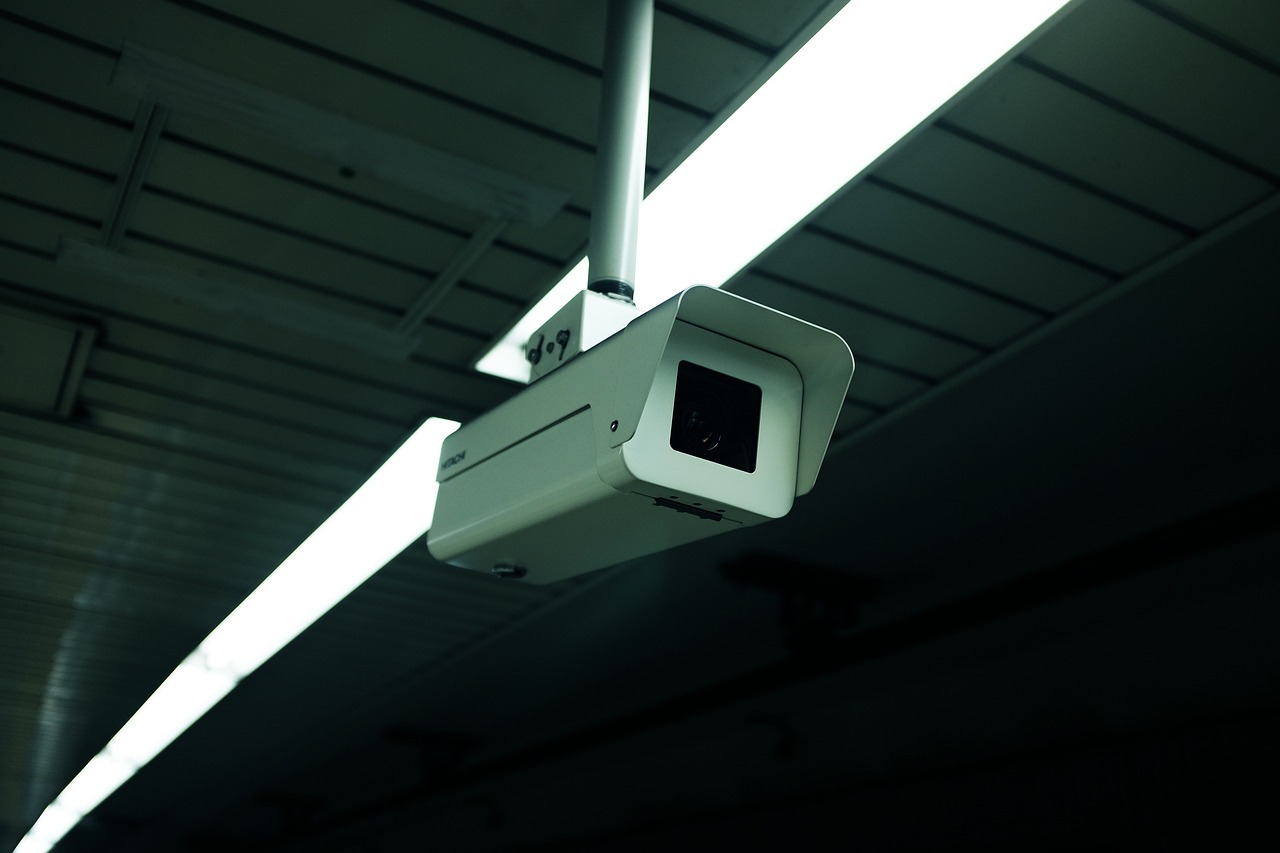
Choosing the Right Smoke Detector
When it comes to safeguarding your home, selecting the right smoke detector is a crucial step that should not be overlooked. With various types available, it's essential to understand how each one functions and what will work best for your specific living situation. At the heart of this decision is the need for a smoke detector that not only fits your home’s layout but also meets your family's needs. So, what should you consider when choosing the perfect smoke detector?
First and foremost, you should think about the type of smoke detector that will be most effective in your home. There are generally two main types: ionization smoke detectors and photoelectric smoke detectors. Ionization detectors are excellent at detecting fast-flaming fires, while photoelectric detectors are better at sensing smoldering fires. For comprehensive protection, many experts recommend installing both types in your home. This combination ensures that you are prepared for any fire scenario.
Another factor to consider is the placement of your smoke detectors. Ideally, you should install them in every sleeping area, outside each separate sleeping area, and on every level of your home, including the basement. This strategic placement maximizes the chances of early detection, giving you and your family the best chance to escape in case of an emergency. To make this process easier, here’s a simple checklist:
- Install smoke detectors in bedrooms.
- Place detectors in hallways leading to bedrooms.
- Ensure there is a detector on every level of the home.
- Consider additional detectors in areas prone to fires, like kitchens and garages.
Moreover, it’s vital to think about the power source of your smoke detector. They can either be battery-operated or hardwired into your home’s electrical system. Battery-operated detectors offer flexibility in placement but require regular battery checks and replacements. On the other hand, hardwired detectors provide a more permanent solution and often come with a battery backup in case of power outages. Weighing the pros and cons of each option can help you make an informed decision.
Lastly, don’t forget to consider additional features that can enhance the functionality of your smoke detector. Some modern smoke detectors come equipped with smart technology, allowing them to connect to your smartphone. This feature can send alerts when smoke is detected or when the battery is low, keeping you informed even when you’re not at home. Additionally, look for smoke detectors with a hush button that allows you to silence false alarms, such as those caused by cooking.
In summary, choosing the right smoke detector involves understanding the different types available, considering their placement, evaluating the power source, and looking for additional features that can enhance safety. By taking the time to make an informed choice, you can significantly improve your home’s safety and ensure peace of mind for you and your loved ones.
1. How often should I replace my smoke detector?
Most smoke detectors should be replaced every 10 years. Check the manufacturer's instructions for specific guidelines.
2. Can I use a combination of smoke detectors?
Absolutely! Using both ionization and photoelectric smoke detectors offers the best protection against various types of fires.
3. How do I maintain my smoke detector?
Regularly test your smoke detectors once a month, replace batteries at least once a year, and clean them periodically to remove dust and debris.
4. Are smart smoke detectors worth it?
Yes, smart smoke detectors can provide added convenience and safety by sending alerts to your smartphone, allowing you to monitor your home remotely.
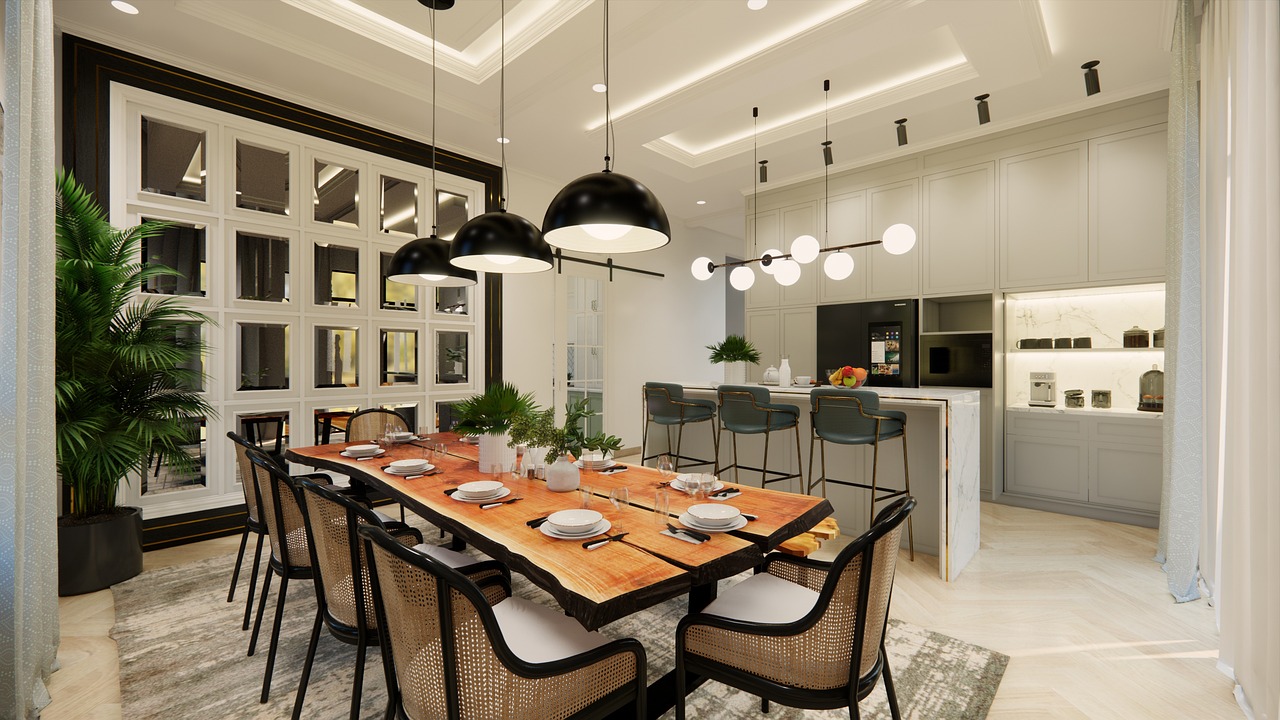
Testing and Maintenance Tips
When it comes to ensuring the effectiveness of your smoke detectors, regular testing and maintenance are not just recommended—they're essential. Think of your smoke detectors as the guardians of your home; without proper care, they might not be able to perform their duty when it matters most. So, how can you keep these vital devices in top shape? Let's break it down.
First off, you should test your smoke detectors at least once a month. This simple act can save lives. To do this, press the test button on the device. If you hear a loud beep, congratulations! Your smoke detector is functioning. If not, it’s time to replace the batteries. Remember, even if the alarm sounds, it’s good practice to check the batteries every six months. You can easily remember this by doing it when you change your clocks for daylight saving time.
Next, let’s talk about the placement of your smoke detectors. They should be installed on every level of your home, including the basement and outside each sleeping area. If you have a multi-story home, consider placing additional detectors in hallways and large rooms. This ensures that no matter where a fire starts, you’ll be alerted.
Another crucial aspect is cleaning your smoke detectors. Dust and debris can accumulate over time, potentially affecting their performance. Use a vacuum cleaner with a soft brush attachment to gently remove dust from the outside of the detector. You might also want to wipe it down with a damp cloth to keep it sparkling clean. Just remember to turn off the power before you start cleaning!
Finally, it’s important to replace your smoke detectors every 10 years. Many people don’t realize that smoke detectors have a lifespan. After a decade, their sensors may become less effective, putting your safety at risk. Mark your calendar or set a reminder on your phone to ensure you don’t forget this critical maintenance step.
In summary, keeping your smoke detectors in good working order is all about consistency and care. By regularly testing, cleaning, and replacing them, you can enjoy peace of mind knowing that you’ve taken significant steps to protect your home and loved ones. Remember, being proactive today can make all the difference in an emergency tomorrow!
- How often should I test my smoke detectors? It's recommended to test them at least once a month.
- When should I replace the batteries in my smoke detectors? You should replace the batteries every six months or whenever the alarm chirps to signal low battery.
- How often should I replace my smoke detectors? Smoke detectors should be replaced every 10 years.
- Can I clean my smoke detectors? Yes, use a vacuum cleaner and a damp cloth to keep them clean, but ensure the power is turned off first.

Creating an Emergency Escape Plan
When it comes to home safety, having an effective emergency escape plan is a game changer. Imagine the chaos of an emergency situation—smoke filling the air, alarms blaring, and the instinct to flee kicking in. In such moments, knowing exactly what to do can make all the difference between safety and disaster. So, how do you create an escape plan that truly prepares your family for the unexpected?
Start by mapping out your home. Take a good look at each room and identify at least two ways to exit. This might seem simple, but in a panic, people often forget about back doors, windows, or even basement exits. It’s crucial to ensure that every family member is familiar with these routes. You can create a floor plan that highlights all the exits and place it in a visible area, like on the fridge or in a common room.
Next, designate a meeting point outside your home where everyone can gather after escaping. This could be a neighbor's house, a tree at the end of the street, or any safe location that is a reasonable distance from your home. The key here is to ensure that everyone knows where to go and that it's a spot that’s safe from any potential hazards, like falling debris or traffic.
Don't forget to practice your escape plan regularly. Just like fire drills at school, rehearsing your escape plan will help everyone remember what to do when the time comes. During practice, simulate different scenarios: what if the main exit is blocked? What if you’re in a room far from the usual exits? Role-playing these situations can help your family stay calm and collected when it really matters.
Lastly, consider the unique needs of your family members. If you have young children, elderly relatives, or pets, think about how their needs might affect your escape plan. For instance, you might need to carry a small child or ensure your pets are secured and ready to go. Make sure everyone understands their role in the escape plan to avoid confusion during an emergency.
In summary, creating an emergency escape plan is not just about knowing the exits; it’s about preparation, practice, and ensuring everyone is on the same page. With a well-thought-out plan, you can turn a potentially chaotic situation into a well-coordinated escape. So, gather your family, sketch out your plan, and practice it regularly. Your future self will thank you!
- How often should we practice our escape plan? It's recommended to practice at least twice a year to keep everyone familiar with the plan.
- What should we do if someone is trapped inside? If someone is trapped, do not go back inside. Call emergency services and inform them of the situation.
- Should we have a plan for different types of emergencies? Yes! Tailor your escape plan for different scenarios, such as fires, earthquakes, or intruders.
- What if we have pets? Include your pets in the plan. Make sure everyone knows how to quickly secure and exit with them.
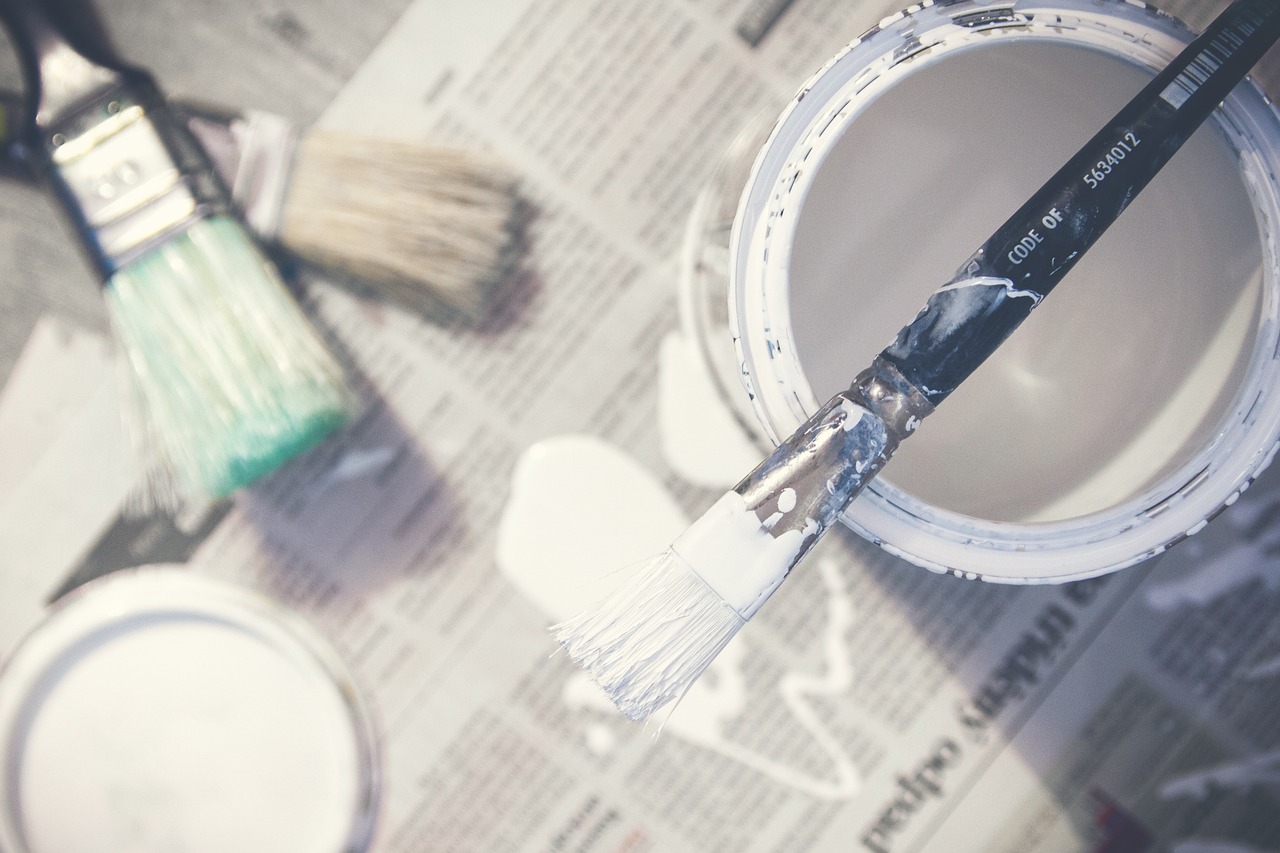
Securing Entry Points
When it comes to home safety, securing your entry points is one of the most critical steps you can take. Think of your home as a fortress; if the entrance is weak, it becomes an easy target for intruders. Doors and windows are the primary access points, and ensuring they are adequately secured can significantly reduce the risk of break-ins. But where do you start? There are several strategies you can implement to enhance the security of your home.
First and foremost, let's talk about the importance of strong locks. Not all locks are created equal, and choosing the right type can make a world of difference. For instance, deadbolt locks are far more secure than standard spring bolt locks. If you're looking to upgrade, consider investing in high-security locks that are resistant to picking and bumping. Additionally, don’t forget about your sliding doors; they often come with weak locks. Using a wooden dowel or a security bar can provide extra protection.
Another effective way to enhance your home security is by installing a security system. These systems can range from simple door alarms to comprehensive surveillance setups that include cameras, motion sensors, and even smart home integration. Many modern systems allow you to monitor your home remotely through your smartphone, giving you peace of mind whether you’re at home or away. When selecting a security system, consider the following features:
| Feature | Description |
|---|---|
| Monitoring | 24/7 professional monitoring services that alert authorities in case of emergencies. |
| Smart Home Integration | Ability to control your system remotely and integrate with other smart devices. |
| Video Surveillance | Cameras that provide real-time footage and can be accessed via mobile devices. |
| Motion Sensors | Detect movement and trigger alarms, adding an extra layer of security. |
Now, let's not forget about the importance of proper lighting. A well-lit exterior can deter potential intruders. Consider installing motion-sensor lights around your entry points and pathways. This way, any movement will trigger the lights, making it difficult for anyone to approach unnoticed. It’s like putting a spotlight on unwanted guests!
Lastly, while securing your entry points, don’t overlook the value of neighborhood watch programs. Engaging with your community can create a safer environment for everyone. When neighbors look out for each other, it becomes much harder for intruders to operate unnoticed.
In conclusion, securing your home’s entry points is not just about installing locks and alarms; it’s about creating a comprehensive security strategy that includes strong locks, surveillance systems, adequate lighting, and community engagement. By taking these steps, you can significantly enhance the safety of your home and enjoy peace of mind knowing you’ve done your part to protect your loved ones.
- What type of lock is the most secure? Deadbolt locks are generally considered the most secure option for external doors.
- Do I need a professional to install a security system? While many systems are designed for DIY installation, hiring a professional can ensure optimal placement and functionality.
- How can I improve outdoor lighting for security? Install motion-sensor lights around entry points and pathways to deter intruders.
- What should I do if I suspect someone is trying to break into my home? Contact local authorities immediately and avoid confronting the intruder.

Choosing the Right Locks
When it comes to home security, one of the most crucial elements is the locks you choose for your doors and windows. Not all locks are created equal, and selecting the right type can mean the difference between safety and vulnerability. Imagine your home as a fortress; the locks are your first line of defense against intruders. But with so many options available, how do you know which locks are best suited for your needs?
First and foremost, consider the type of door or window you are securing. For instance, a standard entry door requires a different lock than a sliding glass door. Here are a few lock types to keep in mind:
- Deadbolts: These are among the most secure options available. They provide a strong barrier against forced entry and are recommended for all exterior doors.
- Smart Locks: These modern locks offer keyless entry and can be controlled via smartphone apps. They are perfect for tech-savvy homeowners looking for convenience.
- Sliding Door Locks: These locks are specifically designed for sliding glass doors and often come with additional security features to prevent lifting.
- Chain Locks: While not the most secure, they can provide an extra layer of security for doors that are frequently used.
When choosing locks, it’s essential to consider the security rating. Look for locks that meet or exceed the standards set by organizations like the American National Standards Institute (ANSI). Locks are rated on a scale from Grade 1 (highest security) to Grade 3 (lowest security). For maximum protection, aim for Grade 1 locks for your main entry points.
Another critical factor is the installation process. Even the best lock can be ineffective if not installed correctly. If you’re not comfortable with DIY projects, it’s wise to hire a professional locksmith to ensure your locks are fitted securely and function properly. Keep in mind that many home improvement stores offer installation services, which can save you time and hassle.
Lastly, don’t forget about maintenance. Locks can wear out over time, especially if they are exposed to the elements. Regularly check your locks for signs of wear, and lubricate them periodically to keep them functioning smoothly. A well-maintained lock not only enhances security but also prolongs the life of the lock itself.
In summary, choosing the right locks is a vital step in enhancing your home security. By understanding the different types of locks, considering their security ratings, ensuring proper installation, and maintaining them regularly, you can create a safer environment for you and your loved ones. Remember, a secure home is a happy home!
Q: What is the best type of lock for an exterior door?
A: The best type of lock for an exterior door is a Grade 1 deadbolt, as it provides the highest level of security against forced entry.
Q: Are smart locks safe?
A: Yes, smart locks can be safe if they are from reputable brands, regularly updated, and installed correctly. They provide convenience and can enhance security when used properly.
Q: How often should I replace my locks?
A: It’s advisable to replace your locks every 5 to 7 years or sooner if you notice any signs of wear or if you have recently moved into a new home.
Q: Can I install a lock myself?
A: While many locks can be installed by homeowners, it’s recommended to hire a professional locksmith for optimal security and proper installation, especially for high-security locks.
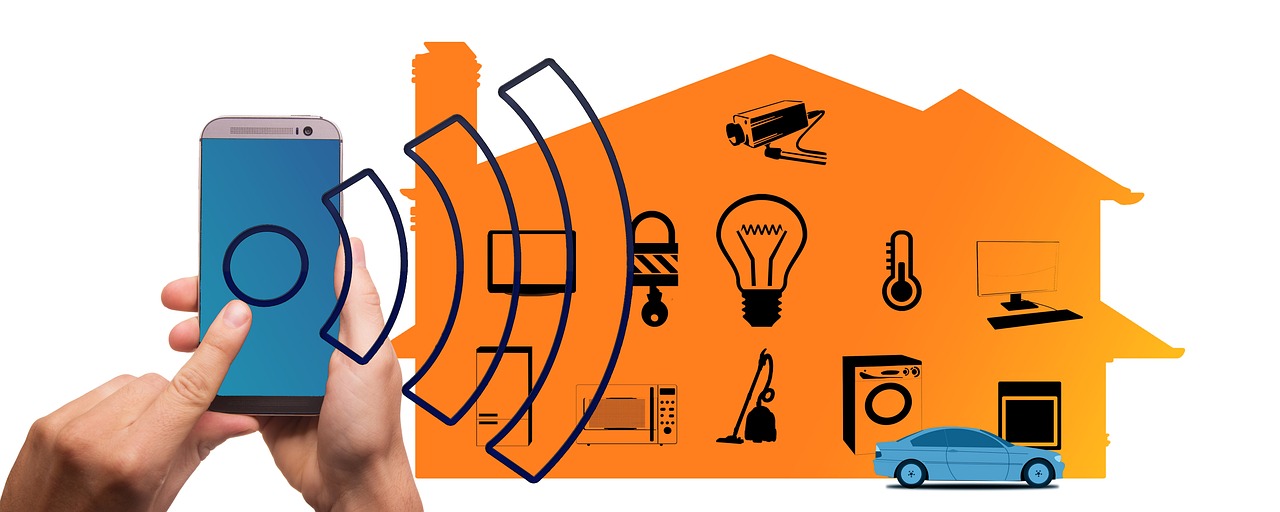
Installing a Security System
When it comes to home safety, one of the most effective ways to deter intruders and protect your loved ones is by . Think of it as a digital fortress around your home—an invisible shield that keeps unwanted visitors at bay. But how do you choose the right system for your needs? And what features should you prioritize? The answers to these questions can make all the difference in enhancing your home security.
First and foremost, consider the type of security system that best fits your lifestyle. There are two primary categories: monitored systems and unmonitored systems. Monitored systems are connected to a professional monitoring service that alerts authorities in case of an emergency, while unmonitored systems rely on loud alarms to deter intruders. Each has its pros and cons, so think about what level of protection you feel comfortable with. For instance, if you travel frequently or spend long hours away from home, a monitored system may provide peace of mind.
Next, let’s talk about the features you should consider. A comprehensive security system typically includes:
- Motion detectors: These sensors detect movement in and around your home, alerting you to any unusual activity.
- Door and window sensors: These devices notify you if a door or window is opened unexpectedly.
- Cameras: Surveillance cameras allow you to monitor your property remotely, providing visual evidence in case of a break-in.
- Smart home integration: Many modern security systems can integrate with smart home devices, allowing you to control everything from your smartphone.
Installation is another crucial aspect to consider. While some systems come with easy DIY installation options, others may require professional installation to ensure everything is set up correctly. If you choose a DIY system, make sure to follow the manufacturer's instructions closely. Proper placement of cameras and sensors is vital for maximizing their effectiveness. For example, cameras should be positioned to cover entry points, while motion detectors should be placed in areas where intruders are likely to pass through.
Moreover, consider the cost of monitoring services. Monthly fees for monitored systems can vary widely, so it’s essential to factor this into your budget. Some companies offer flexible plans, allowing you to choose the level of service that fits your needs. Don't forget to check for any hidden fees or long-term contracts that could catch you off guard.
Finally, think about the long-term reliability of your chosen system. Look for systems that offer warranties and have a good reputation for customer service. Reviews and testimonials can provide insights into how well a system performs in real-world situations. Remember, a security system is an investment in your safety and peace of mind, so take the time to choose wisely.
1. How much does a home security system cost?
The cost of a home security system can vary greatly depending on the features you choose and whether you opt for professional monitoring. On average, you might spend anywhere from $200 to $2,000 for equipment, plus monthly monitoring fees ranging from $15 to $60.
2. Can I install a security system myself?
Yes, many modern security systems are designed for easy DIY installation. However, if you prefer a professional setup, many companies offer that option as well.
3. What should I do if my alarm goes off?
First, stay calm. Check your security cameras if you have them to assess the situation. If you suspect a break-in, contact the authorities immediately.
4. Are security systems worth the investment?
Absolutely! A security system not only deters potential intruders but also provides peace of mind knowing that your home is protected.

Child and Pet Safety
Ensuring the safety of your children and pets is not just a priority; it's a responsibility that every homeowner should embrace. The home, while a sanctuary, can also harbor hidden dangers that might not be immediately apparent. From sharp objects to toxic substances, the risks are numerous, and being proactive can make a world of difference. Think of it like a treasure hunt: the goal is to uncover potential hazards and eliminate them before they can cause harm. So, how do we go about creating a safe haven for our little ones and furry friends?
First and foremost, childproofing your home is essential, especially if you have young children who are naturally curious and prone to exploring. This involves securing furniture to walls to prevent tipping, covering electrical outlets with safety plugs, and storing hazardous materials like cleaning supplies and medications out of reach. By taking these precautionary steps, you can minimize the risk of accidents and create a safer environment. For instance, did you know that furniture tip-over accidents send thousands of children to the emergency room each year? It's a startling statistic that underscores the importance of securing your belongings.
When it comes to pets, their safety is equally crucial. Pets are often inquisitive and may ingest harmful substances without a second thought. It's vital to keep items such as chocolate, certain plants, and medications well out of their reach. Additionally, creating a safe living space for your pets can involve using gates to restrict access to certain areas of the home, especially kitchens or rooms with harmful items. Remember, just like children, pets rely on us to keep them safe from harm.
Here are some quick tips to enhance child and pet safety in your home:
- Install safety gates: Use gates at the top and bottom of stairs to prevent falls.
- Secure cords: Keep blind cords out of reach to avoid strangulation hazards.
- Organize cleaning supplies: Store them in locked cabinets to prevent accidental ingestion.
- Choose pet-safe plants: Ensure that any indoor plants are non-toxic to pets.
As you can see, a little foresight can go a long way in safeguarding your loved ones. Creating a detailed plan that addresses both child and pet safety will not only give you peace of mind but will also foster an environment where everyone can thrive. Remember, safety is not just about reacting to problems as they arise but actively working to prevent them. So, take the time to assess your home and make the necessary adjustments. After all, a safe home is a happy home!
Q: What are the most common household hazards for children?
A: Common hazards include sharp objects, choking hazards, toxic substances, and furniture that can tip over. It's essential to be vigilant and regularly check for potential dangers.
Q: How can I ensure my pet does not ingest harmful substances?
A: Keep all toxic substances, such as cleaning products and certain foods, securely stored away. Additionally, educate yourself about common household items that are dangerous for pets.
Q: Are there specific childproofing products I should consider?
A: Yes! Look for safety locks for cabinets, corner guards for sharp furniture edges, outlet covers, and safety gates for stairs.
Q: How often should I reassess my home for safety?
A: It's a good practice to reassess your home every few months or whenever there are changes, such as new furniture or a new pet.

Childproofing Your Home
When it comes to ensuring the safety of your little ones, is not just a precaution; it’s a necessity. Children are naturally curious and often explore their surroundings without understanding the potential dangers that lurk. From sharp edges to toxic substances, homes can be filled with hazards that may not be immediately obvious. So, how can you transform your home into a safer haven for your children? Let’s dive into some essential childproofing strategies that can make a significant difference.
First and foremost, it’s crucial to assess your home for any potential risks. Begin by getting down to your child's level. This perspective will help you identify dangers that might be overlooked from an adult's viewpoint. Look for items that are easily reachable, such as cleaning supplies, medications, and small objects that could pose a choking hazard. For instance, you might find that your child can easily access the lower kitchen cabinets where sharp utensils are stored. To mitigate these risks, consider using child safety locks on cabinets and drawers. These locks are designed to be simple for adults to operate but challenging for little fingers.
Another area that requires attention is electrical outlets. Children are often drawn to outlets, and without proper safeguards, they can become a source of serious injury. Installing outlet covers is a simple yet effective way to prevent accidental shocks. Additionally, try to keep cords and wires out of reach. You can use cord organizers or even tape them against walls to minimize the risk of tripping and pulling down heavy objects.
Furniture can also pose risks, especially if it is not secured. Heavy furniture items like bookshelves and dressers can tip over if climbed upon. To prevent this, use anti-tip straps to anchor these pieces to the wall. This simple step can prevent serious injuries or accidents. Furthermore, consider the placement of furniture; ensure that there are no sharp edges exposed that a child might bump into while playing. You can easily purchase corner guards to soften these edges.
Let’s not forget about the importance of creating safe play areas. Designate a specific area in your home where your child can play freely and safely. This space should be free from small objects, sharp items, and anything that could be harmful. Soft rugs or mats can provide a cushioned surface for playtime, reducing the risk of injury from falls. Additionally, ensure that toys are age-appropriate and regularly check for any broken or damaged items that could pose a hazard.
In summary, requires a proactive approach. By identifying potential hazards, securing furniture, and creating safe play spaces, you can significantly reduce the risks your children face at home. Remember, the goal is to create an environment where your children can explore and learn safely. After all, a safe home is a happy home!
- What is the best way to childproof my home?
Begin by identifying hazards in your home, securing furniture, and using safety locks and outlet covers. - At what age should I start childproofing?
It’s best to start childproofing as soon as your baby begins to crawl, typically around 6-10 months old. - Are there any specific products you recommend for childproofing?
Look for safety locks, outlet covers, corner guards, and anti-tip straps for furniture. - How often should I reassess my childproofing measures?
Regularly reassess as your child grows and becomes more mobile, typically every few months.
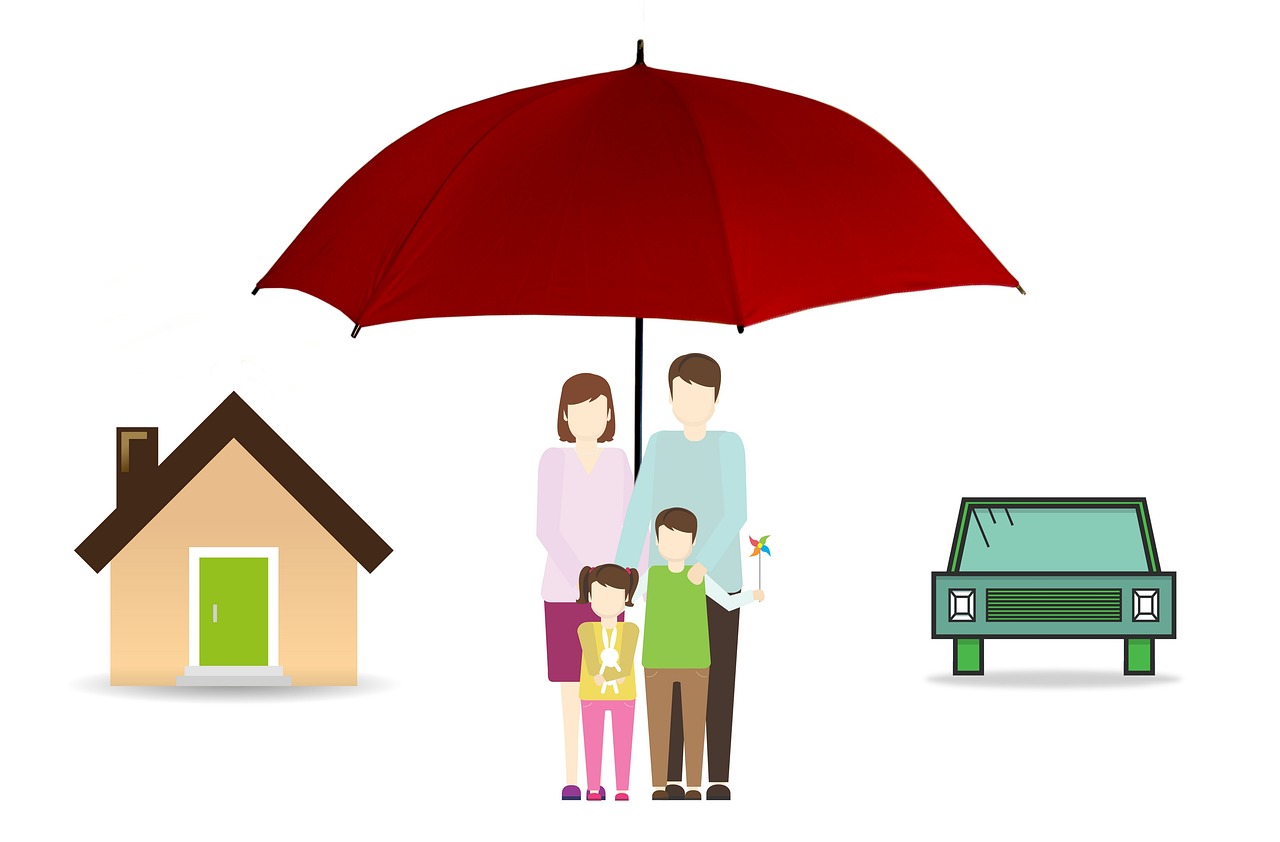
Pet Safety Precautions
When it comes to our furry friends, ensuring their safety at home is just as crucial as childproofing for kids. Pets, especially curious ones, can easily get into trouble if we don’t take the necessary precautions. Think of your home as a playground for your pet. Just like you would secure a playground to prevent accidents, you need to create a safe environment for your pets to roam freely without the risk of injury or harm.
One of the first steps in pet safety is to identify potential hazards in your home. Common household items like cleaning supplies, medications, and even certain plants can pose serious risks to pets. For instance, did you know that some common houseplants, like lilies and azaleas, are toxic to cats and dogs? Keeping these harmful items out of reach or better yet, eliminating them from your home can significantly reduce the risk of accidental poisoning. It's like putting up a fence around a dangerous area in a park; it keeps your loved ones safe from potential threats.
Another important aspect of pet safety is securing your home’s environment. This includes checking for small spaces where your pet could squeeze through or get stuck. For example, if you have a dog that loves to explore, ensure that windows and doors are securely closed and that your yard is fenced in. Regularly inspecting your home for any gaps or openings can prevent your pet from wandering off or getting into dangerous situations. Just think about it: one open window could lead to a world of trouble for your adventurous little buddy!
In addition to securing your home, it’s essential to be mindful of the items you bring into it. Many pet owners may not realize that certain foods, such as chocolate, grapes, and onions, can be toxic to pets. Keeping these items out of reach or not having them in the house at all can prevent unfortunate accidents. Furthermore, it’s always a good idea to store hazardous materials, like cleaning agents and chemicals, in cabinets that are locked or out of your pet's reach. It’s like having a safety net; it gives you peace of mind knowing that your pet is safe from potential dangers.
Moreover, creating a safe space for your pets is vital. This can be a designated area in your home where they can play, relax, and feel secure. Make sure this area is free from hazards and equipped with their toys, bed, and food. Think of it as their little sanctuary, a place where they can retreat and feel safe, especially during stressful situations like thunderstorms or fireworks.
Lastly, regular veterinary check-ups can help ensure your pet remains healthy and safe. Your veterinarian can provide you with valuable advice on keeping your home pet-friendly and what precautions to take based on your pet's specific needs. After all, just as we get regular check-ups to maintain our health, our pets deserve the same care!
- What household items are harmful to pets? Common harmful items include cleaning supplies, certain plants, and human foods like chocolate and grapes.
- How can I pet-proof my home? Secure windows and doors, store hazardous items out of reach, and create a designated safe space for your pet.
- Should I take my pet to the vet regularly? Yes, regular veterinary check-ups are crucial for maintaining your pet's health and safety.

Emergency Preparedness
Being prepared for emergencies is not just a good idea; it’s essential for ensuring the safety and well-being of your family. Emergencies can strike at any moment, whether it’s a natural disaster, a medical crisis, or a fire. The key to navigating these unpredictable situations lies in having a solid plan and the right resources at your fingertips. Imagine being caught off guard during a storm without any supplies or a plan. It’s a terrifying thought, isn’t it? By taking proactive steps now, you can avoid panic later.
One of the first steps in emergency preparedness is assembling an emergency kit. This kit should include all the essentials you might need in a crisis. Think of it as your survival toolbox. What should go into this kit? Here are some must-have items:
- Water: At least one gallon per person per day for three days.
- Food: Non-perishable items that can last for at least three days.
- First Aid Kit: Include bandages, antiseptics, and any necessary medications.
- Flashlight: Essential for power outages.
- Battery-powered or hand-crank radio: To stay informed about weather updates and emergency instructions.
- Multi-tool: Handy for various situations.
- Whistle: To signal for help if needed.
Additionally, don’t forget to include personal items such as important documents, cash, and any special needs for family members, including children and pets. It’s also wise to periodically check and update your emergency kit to ensure everything is in working order and not expired.
Another crucial aspect of emergency preparedness is developing a communication plan. In the chaos of an emergency, it’s easy to lose track of loved ones. Establish a plan that outlines how your family will stay in touch. This could involve designating a meeting place outside your home or a nearby landmark. It’s also beneficial to have a list of emergency contacts that everyone can access. Consider using technology to your advantage by utilizing messaging apps or social media to keep everyone informed during a crisis.
Finally, practice makes perfect. Conduct regular drills with your family to ensure everyone knows what to do in case of an emergency. Whether it’s a fire drill or a severe weather drill, practicing these scenarios can help reduce anxiety and confusion when it matters most. Just as athletes train for their big games, so should you prepare for emergencies. It’s all about building muscle memory and confidence.
In conclusion, emergency preparedness is a vital component of home safety that should never be overlooked. By assembling an emergency kit, developing a communication plan, and practicing drills, you can create a secure environment for your family. Remember, the time to prepare is now, not when disaster strikes. Take these steps seriously, and you’ll be better equipped to handle whatever life throws your way.
Q: How often should I check my emergency kit?
A: It’s recommended to check your emergency kit at least twice a year. Make sure to replace expired items and update any personal information.
Q: What should I do if I have pets?
A: Include pet supplies in your emergency kit, such as food, water, and medications. Have a plan for where to take your pets in case of an evacuation.
Q: How can I ensure my family remembers the emergency plan?
A: Regularly review the plan with your family, and conduct drills to reinforce the steps everyone should take during an emergency.
Q: What types of emergencies should I prepare for?
A: Prepare for a variety of emergencies, including natural disasters (like hurricanes or earthquakes), fires, medical emergencies, and power outages.

Creating an Emergency Kit
When it comes to home safety, one of the most crucial steps you can take is to create an emergency kit. Imagine being caught in a crisis without the essentials you need to stay safe and secure—it's a scenario no one wants to face. An emergency kit is like your personal safety net, ready to catch you when life throws unexpected challenges your way. Whether it's a natural disaster, a power outage, or any unforeseen event, having a well-stocked emergency kit can make all the difference. So, what should you include in this lifesaving kit?
First and foremost, consider the basic needs: water, food, and first aid supplies. The general recommendation is to have at least one gallon of water per person per day for three days. Additionally, you should stock up on non-perishable food items that can last for a while without refrigeration. Think canned goods, energy bars, and dried fruits—anything that provides nourishment without the need for cooking. But it doesn’t stop there; you also need to think about medical supplies. A comprehensive first aid kit is essential, so make sure it includes bandages, antiseptics, pain relievers, and any personal medications you or your family may need.
Now, let’s talk about tools and equipment. Consider including a flashlight with extra batteries, a multi-tool, and a whistle to signal for help if needed. It’s also wise to have a battery-powered or hand-crank radio to stay updated on emergency broadcasts. In addition, don’t forget to pack some personal hygiene items, such as moist towelettes, garbage bags, and toilet paper. These might seem trivial, but they can greatly enhance your comfort during tough times.
Another important aspect of your emergency kit is having a communication plan. Include a list of emergency contacts, such as family members, friends, and local emergency services. Ensure that everyone in your household knows where the kit is stored and how to use its contents. It’s also a good idea to have a small amount of cash on hand, as ATMs may not be functional during emergencies. By taking these steps, you can ensure that your family is ready to face whatever comes your way.
To help you visualize the contents of your emergency kit, here’s a quick table summarizing essential items:
| Essential Item | Quantity | Notes |
|---|---|---|
| Water | 1 gallon per person per day for 3 days | Store in a cool, dark place |
| Non-perishable Food | At least a 3-day supply | Canned goods, energy bars, etc. |
| First Aid Kit | 1 kit | Include personal medications |
| Flashlight | 1 | With extra batteries |
| Multi-tool | 1 | For various needs |
| Battery-powered Radio | 1 | Hand-crank option is ideal |
| Hygiene Items | As needed | Moist towelettes, toilet paper, etc. |
| Cash | Small amount | For emergencies |
In conclusion, creating an emergency kit is a proactive step towards safeguarding your family and home. It’s not just about gathering supplies; it’s about ensuring peace of mind and readiness for any situation. Remember, the time to prepare is now, not when disaster strikes. So, gather your supplies, involve your family in the process, and make sure everyone knows the plan. Together, you can face any emergency with confidence!
1. How often should I check my emergency kit?
It's a good idea to check your emergency kit at least twice a year. Make sure that food and water supplies are still safe to consume and that any medications are not expired.
2. Can I use my emergency kit for everyday needs?
Absolutely! Your emergency kit can double as a travel kit or a go-bag for outdoor adventures. Just remember to replenish supplies after each use.
3. What should I do if I have specific medical needs?
If you or a family member has specific medical needs, ensure that your emergency kit includes necessary medications and medical supplies. Consult with your healthcare provider for personalized recommendations.
4. How can I make my emergency kit more family-friendly?
Involve your kids in the process! Let them choose some of the snacks or help pack the kit. You can even create a fun family emergency plan that includes everyone’s input.

Developing a Communication Plan
When disaster strikes, having a well-thought-out communication plan can be the difference between chaos and calm. Imagine a scenario where your family is scattered across different locations during an emergency. Without a plan, panic can set in, and important information can get lost in the confusion. So, how do you create a communication plan that keeps everyone informed and safe?
First, start by identifying the key contacts in your communication plan. These should include family members, close friends, and even neighbors who can help in times of crisis. It’s essential to have a mix of local and out-of-town contacts. Why? Because local lines may be busy or down during an emergency, while long-distance calls might still go through. A simple table can help you keep track of these contacts:
| Name | Relationship | Phone Number | |
|---|---|---|---|
| John Doe | Brother | (555) 123-4567 | john@example.com |
| Jane Smith | Neighbor | (555) 987-6543 | jane@example.com |
| Emily Johnson | Friend | (555) 555-5555 | emily@example.com |
Next, establish a meeting point where everyone can gather if evacuation is necessary. This location should be familiar to all family members and should be a safe distance from your home. Think of it as your family's “safe harbor” during a storm. Make sure everyone knows how to get there and practice the route if possible.
In addition to a physical meeting point, you should also have a communication method in mind. Decide whether you will use phone calls, text messages, or social media to keep in touch. Text messages can often get through when calls can’t, so it’s wise to encourage family members to use this method for quick updates. You might even consider setting up a family group chat to streamline communication.
Don’t forget to discuss your plan regularly. It’s easy to forget details if you only talk about it once a year. Make it a part of your family routine. For instance, you could integrate a brief review of your communication plan during family meetings or dinner discussions. This way, everyone stays informed and ready to act.
Lastly, consider creating a backup plan for those times when technology fails. For example, if cell towers are down, have a designated landline or a neighbor's house as a fallback communication point. It’s all about being prepared for the unexpected. Remember, the more prepared you are, the less stress you will face when an emergency occurs.
In summary, developing a communication plan is not just about having a list of contacts; it's about creating a safety net that keeps your family connected and informed when it matters most. By taking the time to plan, practice, and prepare, you can ensure that your loved ones are safe and sound, even in the most challenging situations.
- What should be included in a communication plan? A communication plan should include key contacts, a meeting point, communication methods, and backup plans.
- How often should we review our communication plan? It’s best to review your communication plan regularly, such as during family meetings or at least once a year.
- What if we have different schedules? Make sure to have a flexible plan that accommodates everyone's schedules and includes alternative contacts.
Frequently Asked Questions
- What are the most common home safety risks?
Common home safety risks include slips and falls, fire hazards, carbon monoxide poisoning, and burglary. Being aware of these risks is the first step in creating a safer home environment.
- How often should I test my smoke detectors?
You should test your smoke detectors at least once a month. Additionally, replace the batteries at least once a year and the entire unit every 10 years to ensure optimal performance.
- What type of smoke detector is best for my home?
The best type of smoke detector depends on your home’s layout. Ionization detectors are great for detecting fast-flaming fires, while photoelectric detectors are better for smoldering fires. Consider using a combination of both for maximum safety.
- How can I secure my doors and windows?
To secure doors and windows, use deadbolt locks, window locks, and security bars. Installing a home security system with alarms and cameras can also enhance your security significantly.
- What should I include in my emergency kit?
Your emergency kit should include essentials like water, non-perishable food, a flashlight, batteries, a first-aid kit, and important documents. Don’t forget to personalize it based on your family’s specific needs!
- How can I childproof my home effectively?
Childproofing your home involves securing furniture to walls, using outlet covers, locking away hazardous materials, and keeping small objects out of reach. It’s about creating a safe environment for your little ones to explore.
- What are some pet safety precautions I should take?
To keep your pets safe, ensure that harmful substances like cleaning supplies and medications are stored out of reach. Additionally, create a secure area for them to play and explore without hazards.
- Why is it important to have an emergency communication plan?
An emergency communication plan ensures that your family knows how to reach each other during a crisis. This is crucial for staying connected and informed, especially during stressful situations.



















